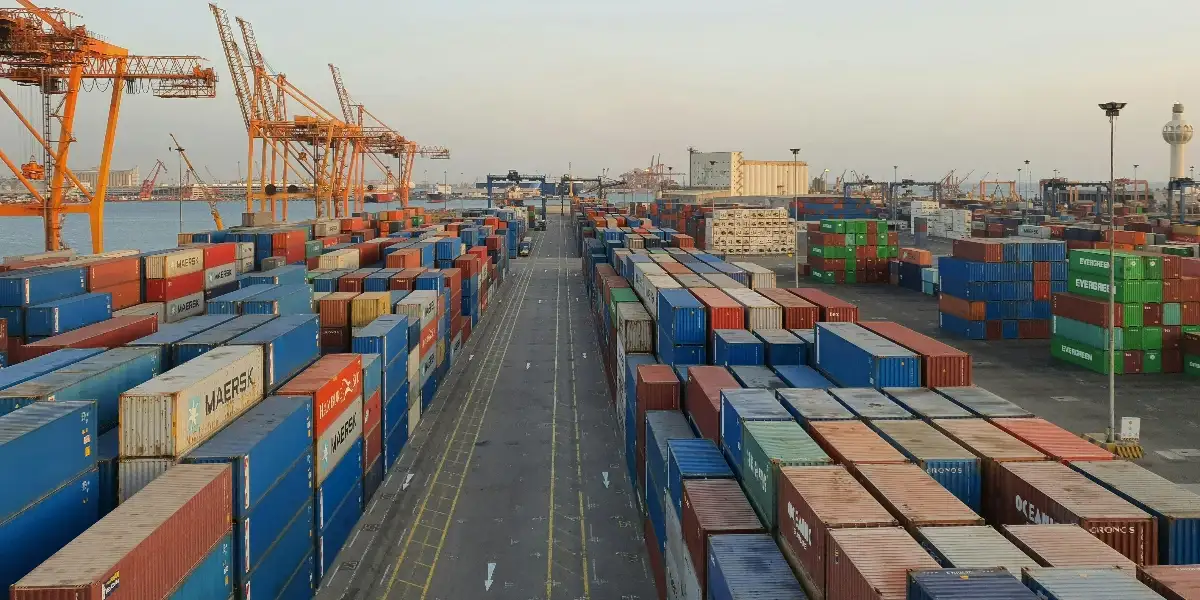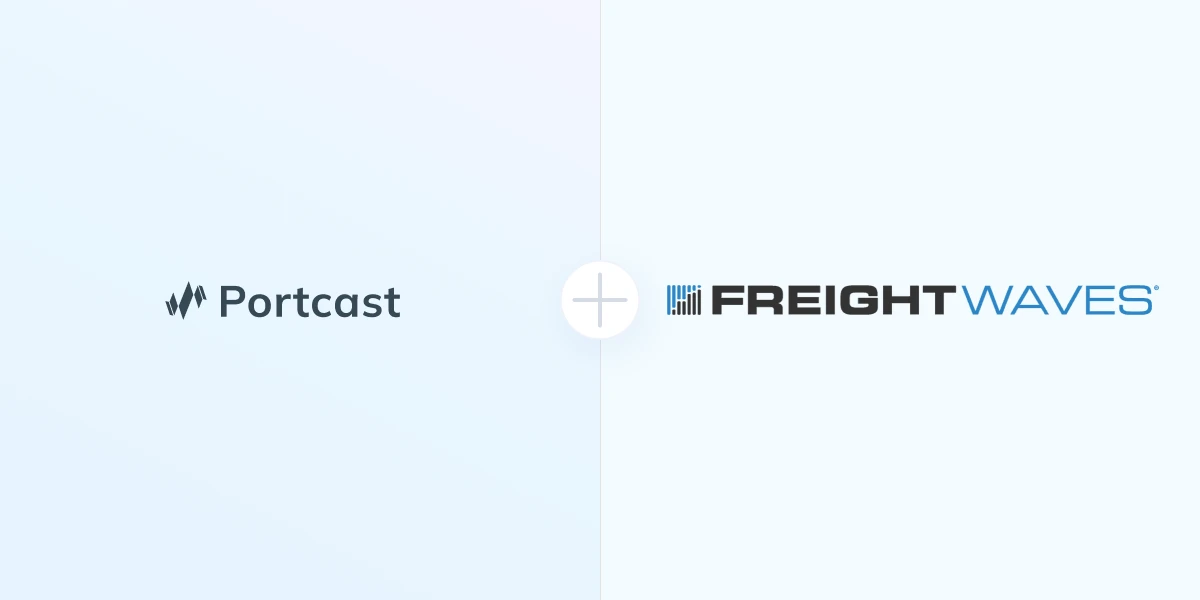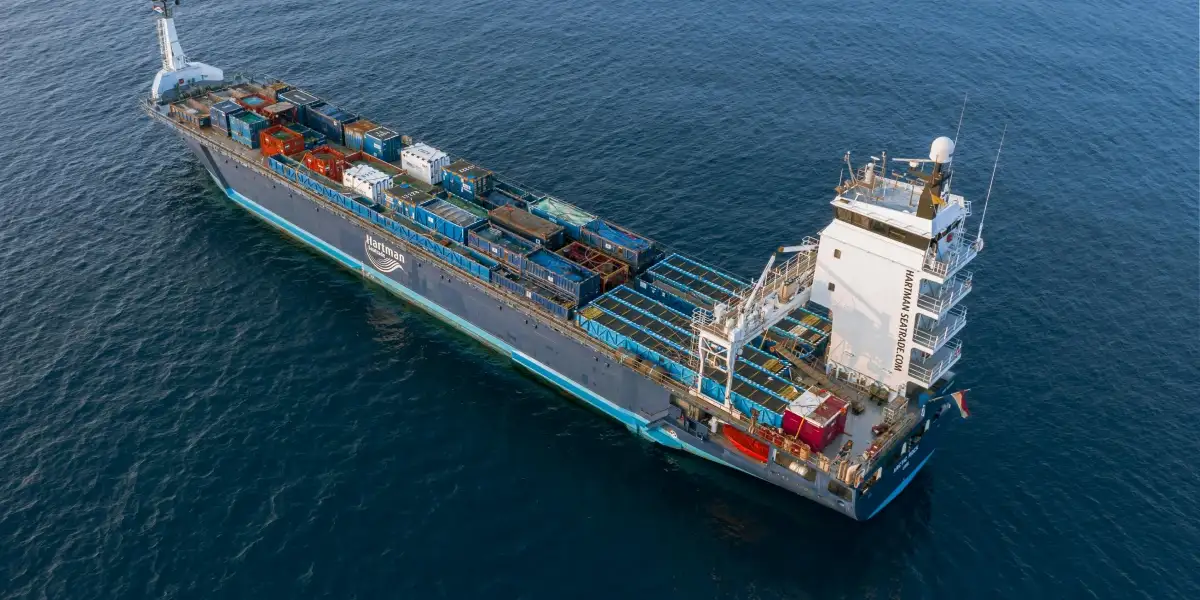In 2024, demurrage and detention (D&D) charges added more than $10 billion to global ocean freight costs, according to a report by Drewry.
For most logistics and supply chain teams, these charges seem inevitable, a frustrating line item that they cannot control.
But here's what many teams don't realize: demurrage and detention fees are often predictable, and in many cases, preventable.
This blog breaks down:
- What are demurrage and detention charges?
- What is the difference between demurrage and detention charges
- What causes demurrage and detention charges
- How to avoid demurrage and detention Charges
- The role of predictive visibility at the container and terminal level to help you avoid detention and demurrage charges
What are Demurrage and Detention Charges?
What is a Demurrage Charge?
Shipping carriers offer shippers a limited number of free days, known as free time, to pick up full containers from the port terminal after they arrive. This period is usually included in the freight charges. If the container is not collected within this time, demurrage charges apply. Demurrage is a daily fee charged for each container that remains at the terminal after the free time has expired. It typically ranges from US$50 to US$250 per container per day, depending on the container size, port terminal, carrier, and contract terms.
What is a Detention Charge?
Detention refers to the charges applied when a shipper fails to return a container within the specified timeframe after picking it up from the port. Shippers are given a set number of free days to pick up the container, load or unload it at their facility, and return it empty (or full, depending on the context). If the container is not returned within this period, detention charges will be applied for every additional day the container remains in the shipper's possession. These typically range from US$75 to US$100 per day, based on the contract and container type.
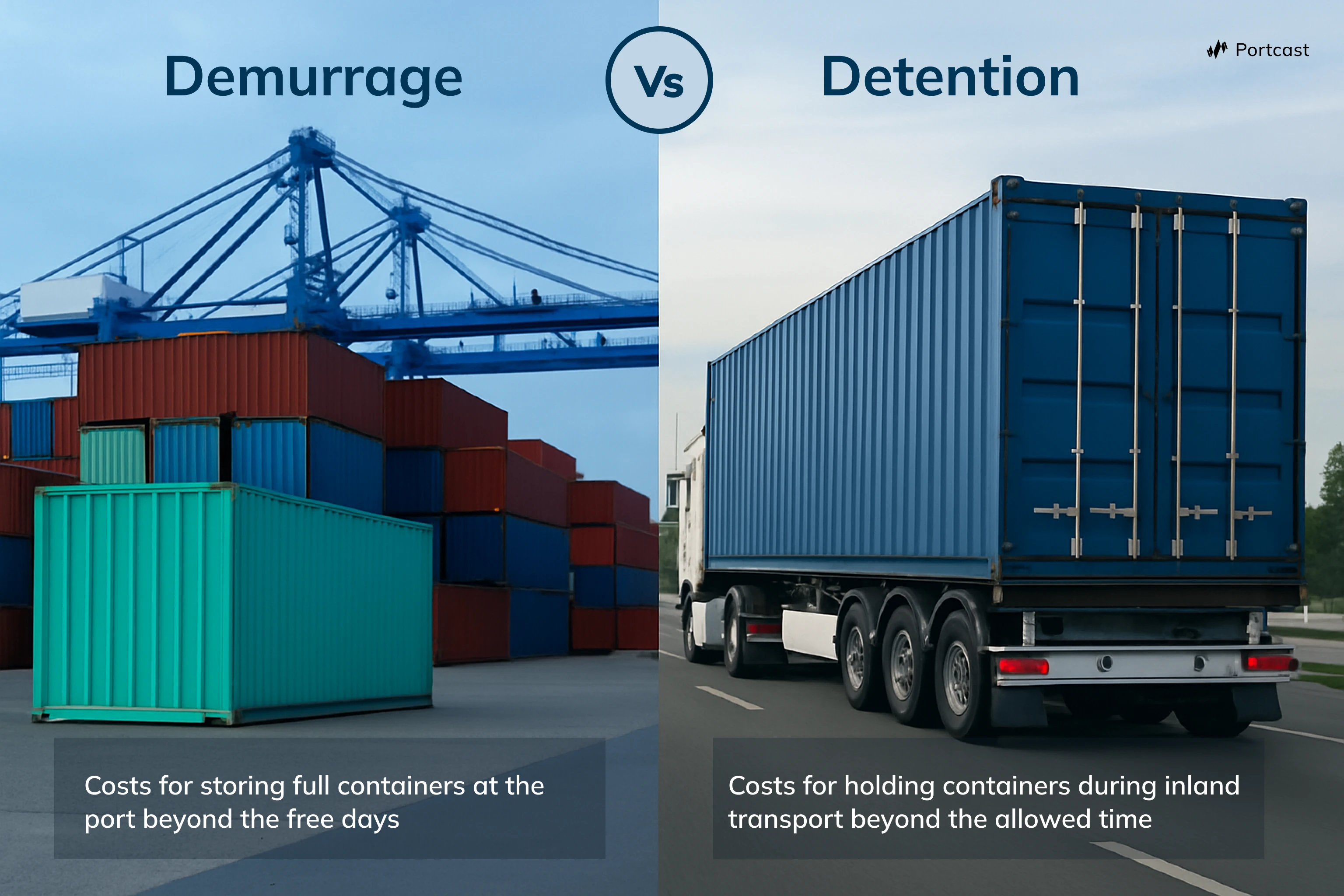
What is the Difference Between Demurrage and Detention Charges
While both are penalty fees, demurrage and detention charges apply at different stages of container movement. Here's the difference between detention and demurrage charges:
What Causes Demurrage and Detention Charges?
Detention and Demurrage charges are triggered when containers overstay their allotted free time, either at the terminal or after pickup. But that's just the surface. The underlying issues are often buried deeper in your daily operations:
- Port congestion or vessel delays that delay discharge and compress the free time window
- Manual container prioritization that leads to idle dwell at terminals
- Delayed trucking and poor stakeholder coordination that cause late pickups or empty returns
- Disputable detention and demurrage fees that finance teams struggle to validate and audit
Common triggers for demurrage charges
- Terminal congestion delays container discharge
- Vessel arrival delays compress free time
- Customs holds or document issues
- Trucking unavailability for pickup
- Port closures due to holidays, strikes, or weather
Common triggers for detention charges
- Delay in unloading at the facility
- Consignee unavailability or rejection
- Trucker delays or unclear empty return instructions
- Depot closures or congestion
- Internal delays in de-stuffing containers
Each of these is a chance to prevent detention and demurrage charges, if you can see them early.
Avoiding Detention and Demurrage Charges: What Should You Do?
Even with the Federal Maritime Commission's (FMC) new billing regulations for detention and demurrage, many shippers continue to incur high D&D fees. The key issue remains a lack of timely visibility into delays and when free time is about to expire.
What do you need to avoid demurrage and detention charges?
You need real-time container status, terminal-level visibility into congestion and delays, and predictive ETAs and ETDs that explain why disruptions occur. That's what predictive visibility delivers: the foresight to act before demurrage and detention charges hit.
Predictive visibility equips your team with early warning signals that static ETAs and manual workflows can't provide.
With predictive visibility insights, you can:
- Anticipate dwell time risks before the vessel even arrives
- Prioritize containers that are likely to overstay free time
- Pre-alert 3PLs or trucking partners to pickup risks
- Flag containers with no movement post-discharge for follow-up
- Detect return delays and address them before detention charges apply
👉 See how real-time alerts and predictive ETAs can help your team act earlier. Request a Demo.
Why Terminal-Level Visibility Is Key to Avoiding Detention and Demurrage Charges?
Demurrage and detention charges pile up because teams lack clear visibility after vessel arrival. Relying on static carrier updates leads to missed container milestones and costly delays. That's where Portcast's terminal-level visibility closes the gap with real-time event detection and predictive alerts.
With Portcast's terminal-level visibility, you get:
- Real-time tracking of every terminal event (discharge, gate moves, empty returns)
- Timely alerts for containers showing inactivity after arrival
- Early warnings based on predictive port congestion trends
By closing the gap between port-level updates and actual container movements, Portcast helps operations and logistics teams avoid demurrage and detention charges before they escalate.
👉 Want to know standard D&D charges across major ports and carriers? We've got the data. Contact us to access the dataset.
Outcomes of Reducing Demurrage and Detention Charges With Predictive Visibility
For supply chain professionals, using predictive visibility to avoid detention and demurrage charges solves real operational friction:
Fewer surprises at the terminal
Receive proactive alerts when containers haven't moved after discharge or are close to exceeding free time. This gives teams time to take action before charges apply.
Smarter container prioritization
Identify containers facing delay due to port congestion or missed handoffs. Focus ground operations where they matter most.
Clearer communication with 3PLs and trucking partners
Share early alerts and predictive insights with partners to reduce missed pickups, rebooking, and last-minute firefighting.
More time to act during peak seasons
Leverage predictive dwell and port congestion signals to navigate vessel bunching, slowdowns, and limited depot capacity. Even a 2–3 day predictive buffer can drastically reduce charges across peak seasons or congested ports.
Reduced invoice disputes and better audit clarity
With actual milestone timestamps, you get access to real-time and historical terminal event data so that finance teams can validate or contest charges confidently.
👉 See how Portcast's Freight Audit flags D&D errors, detects overcharges and cuts audit time by 10x—saving up to 30% on freight costs. Request a Demo.
How Can You Reduce Detention and Demurrage Charges Using Portcast?
Unlike generic visibility tools that stop at port arrival, Portcast offers real-time terminal milestones and predictive insights, helping you act before demurrage and detention charges occur.
Portcast combines real-time container tracking with predictive visibility built on deep logistics data. Here's how it helps reduce Detention and Demurrage charges:
- Terminal milestone accuracy: Portcast detects discharge, gate-out, and return events with high precision, helping you catch movement gaps in real time.
- Port and vessel congestion forecasts: Our models analyze global vessel behavior, blank sailings, and port dwell trends to estimate risks before delays occur.
- Risk-based container alerting: Receive early notifications when containers are likely to breach free time or when movement is delayed after discharge.
- Shared visibility for stakeholders: Share predictive insights with ops teams, forwarders, or truckers, so everyone can act before demurrage and detention charges build up.
- Faster Dispute Resolution: If you're already facing inflated D&D fees, our AI-powered freight audit helps you validate every charge, providing downloadable evidence to dispute overbilling confidently.
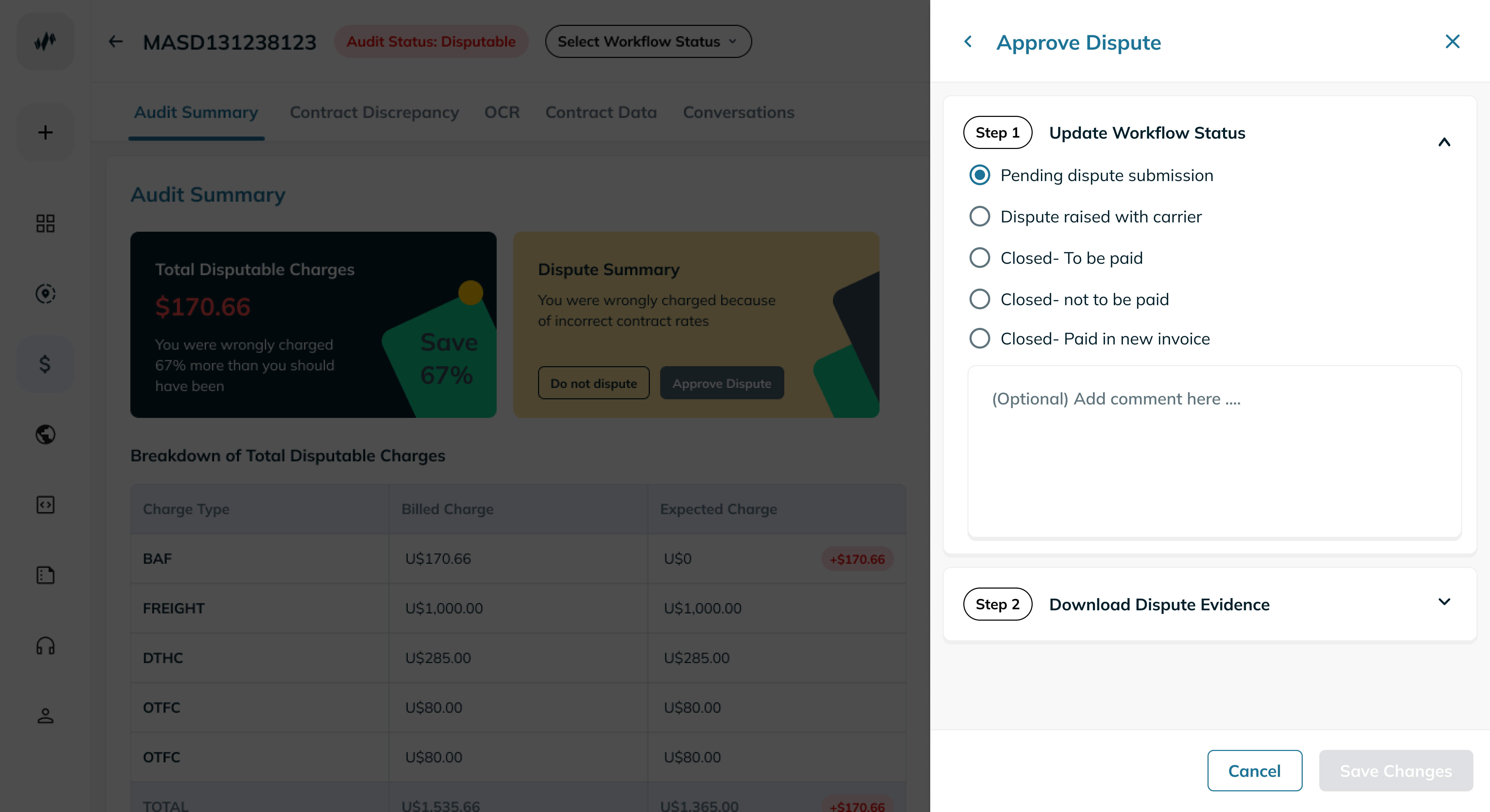
This sets the foundation for moving toward touchless supply chains, eliminating time-consuming manual follow-ups, saving time and resources, and reducing profit leakage through predictive logistics.
Ready to Cut Avoidable D&D Costs From Your Freight Spend?
See how Portcast's platform flags high-risk containers in advance, so your team can take action before incurring demurrage and detention charges. With the right foresight, these penalties can be avoided, and the rest can be contested with confidence.
Want to eliminate avoidable demurrage and detention (D&D) penalties and reclaim hours lost to manual container tracking?
▶️Book a demo to see Portcast in action
Checklist
Get the complete checklist of demurrage and detention triggers, and what action to take — all in one downloadable PDF.

